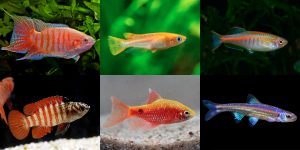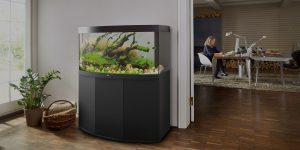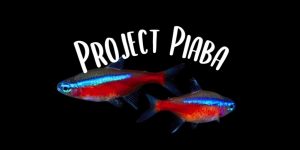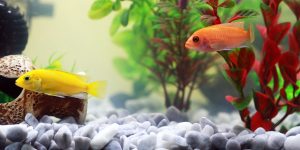Neon tetras are small, beautiful, and generally hardy. They’re also extremely polite, it seems, according to a new scientific study.
- Paracheirodon innesi form queues to avoid underwater stampedes.
- Behaviour eliminates danger of pushing and shoving in emergencies.
- First-ever time that such movements in fish have been recorded.
One of the freshwater aquarium hobby’s most ubiquitous fish, we thought we knew just about everything there was to know about the humble but always beautiful neon tetra (Paracheirodon innesi). As it turns out, though, there was something we didn’t know: how polite these little fish are. That’s as scientists studying groups of neons have observed them engaging in some truly fascinating conduct.
Queueing Quirks
In emergency situations, stampedes are not uncommon. Unfortunately, both in the animal kingdom and elsewhere, such stampedes can prove deadly as individuals push through and against one another to ensure their own survival. Almost without exception, this makes any emergency scenario worse.
Interestingly, neon tetras appear to have not only learned this but adjusted their collective behaviour accordingly as a species. It’s likely similar to how sticklebacks may learn from other fish and teach their offspring accordingly. Scientists observing Paracheirodon innesi found that, when faced with the need to escape a threat, the handsome little blue and red fish formed orderly queues to avoid stampede-type situations and the accompanying dangers of pushing and shoving in order to get away.
When observed evacuating through narrow spaces, groups of neons formed orderly lines, so as not to crash into each other or clog up the resulting path to escape. Those studying this newly observed conduct have since concluded that it stems from a respect for social rules among groups of neon tetras, even when placed under pressure.
The behaviour was recorded by a team of scientists at France’s Université Grenoble Alpes. Université Grenoble Alpes is a public research university in the Auvergne-Rhône-Alpes region of southeastern France. Founded in 1339, it’s the country’s third-largest university, with approximately 60,000 enrolled students and over 3,000 researchers.
Brand-New Observations
The study in question marks the first-ever time that crowd movements among fish have been recorded relating specifically to group evacuations. Similar observations have previously focused exclusively on land-dwelling animals.
The neon tetras observed by Université Grenoble Alpes’ scientists were introduced to an aquarium with small openings leading to and from different compartments. When a net was placed in the tank, the fish bid a hasty retreat – as they always do!
However, on closer inspection, groups of up to 30 of the little fish gathered around the small openings in the tank before passing through them. This saw them avoid physical contact as they effectively queued up before passing through, one by one, at an ordered and constant rate. That allowed them to escape the dreaded net in the safest and most timely fashion.
Similar behaviour elsewhere in the animal kingdom isn’t unheard of, of course. Yet, it’s rare to see it executed with such success, according to the recent study completed at Université Grenoble Alpes. The studied tetras’ queuing abilities were likened to those of famously well-coordinated ant colonies. That’s a far cry from the chaotic antics of, for example, sheep herds and many other animals when evacuating – humans included!
It’s now hoped that the findings will inform the development of everything from smart robots to traffic controls for self-driving vehicles.






